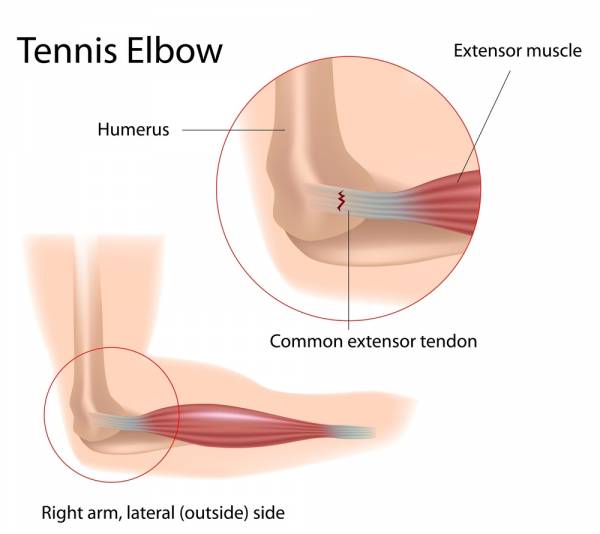Elbows. We all have them. And, yes, these body parts get injured, too. Hopefully, you are part of the population that has never experienced the infamous tendonitis associated with the elbow. However, if you are part of the population that has experienced tennis elbow, golfer’s elbow, or even wrist pain, you know that these particular injuries can be nagging, persistent, and really put a damper on both training and everyday life.
Tendonitis is basically inflammation of the tendons as they insert on the related bone. The tendons connect the muscles to the bones. The suffix “–itis” means inflammation and is usually paired with the associated body part, as in epicondylitis or Achilles tendonitis.
Acute inflammation is a natural, normal process in our bodies. Our bodies innately know what to do to heal themselves. Pain, swelling, redness, and warmth are all part of the acute inflammation response. This inflammation response is supposed to be fast and direct, not extended. It is when this inflammation response becomes chronic or even systemic that it is difficult to manage.
When a patient comes to me with elbow pain and points to either condyle area (a condyle is the knobby part at the end of a bone), as in tennis elbow or golfer’s elbow, the first thing I find out is how long he or she has had the pain. Generally, if the symptoms have been around less than four weeks, the quicker it will go away. If someone has experienced elbow pain for more than four weeks, then serious intervention is needed.
For acute lateral epicondylitis (tennis elbow) or medial epicondylitis (golfer’s elbow), I recommend icing with an ice cup 7-9 minutes at a time, multiple times a day, with an hour between icings. I advise all the same things I recommended in my shoulder article because shoulder mobility and thoracic mobility definitely affect the elbow flexibility. I recommend treatment two to three times per week for the first three to four weeks. And, with out a doubt, no “grippy workouts.” That means no pull-ups, farmer’s carries, kettlebell swings, etc. When it calms down to pain less than 2 out of 10, you can ease back into workouts.

Chronic epicondylitis requires serious intervention. By this point there is inflammation everywhere in your body. Your body does not know how to regulate the mess you have going on. My tips are the same as above with a few added bonuses. Ice with ice cup 7-9 minutes at least three times a day. Get yourself chiropractic plus soft tissue treatment three times a week. If you have a chiropractor and a massage therapist, use them both. Perform shoulder mobility and thoracic mobility regularly. Clean up your diet – no grains, dairy, or sugar for thirty days. You have got to decrease the overall inflammation in your body or that nagging injury will not disappear. And finally, examine your life. I find that chronic, lingering injuries in our life are usually our bodies’ way of trying to tell us something. The elbow joint is flexible in all ways except backwards, so there could be something in your life hindering your progression forward professionally, athletically, emotionally, or spiritually.
Once you do get the okay to start back with your normal fitness routine, you must ease into it and continue regular maintenance on your body. Kelly Starrett has a great video on elbow mobility and Donnie Thompson has a video with his tips for dealing with elbow pain, too. Be sure the shoulders are firing properly to take that pressure off the elbow. Find a mobility routine that works for you that you can do before and after workouts. Keep your elbows, and yourself, healthy.
Photos courtesy of Shutterstock.






